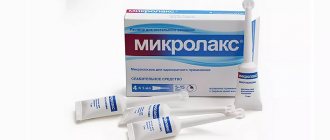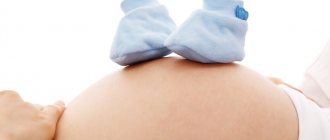According to statistics, 1 baby out of 10 is born ahead of schedule. Such children are classified as premature. They require special attention, because they are prone to lagging behind in physical and mental development. It is not surprising that every parent is overcome by anxiety if the child is born before 37 weeks. Let's figure out how such children differ from others, and how the first year of their life goes.
Why is this happening?
Your baby was in a hurry to be born and was born ahead of schedule - what to do? First of all, don't panic. According to WHO statistics, in civilized countries, 9 out of 10 premature babies survive and subsequently develop successfully. And don't think it's just you: about 15 million babies are born prematurely every year, or about 1 in 10.
Of course, every woman who becomes an “early bird” mother is primarily concerned with why this happened.
The causes of prematurity are not fully understood, but several factors increase the chance of preterm birth:
- History of abortion or premature birth;
- Multiple pregnancy;
- Infection while expecting a baby;
- Preeclampsia;
- Placental abruption;
- Diabetes mellitus in mother;
- Hypertension and heart disease;
- Smoking and drinking alcohol during pregnancy;
- Poor maternal nutrition;
- Pregnancy at too young or late age.
Premature babies: consequences
However, it is not at all necessary that all the difficulties listed above will affect the child. In addition, competent medical supervision and parental care work wonders. Many cope with all difficulties and continue to live fully.
Prematurity is not always a story of illness and weakness. Thus, it is known that such celebrities as the artist Leonardo da Vinci, the emperor and commander Napoleon Bonaparte, the scientist Albert Einstein and one of the founders of classical physics Isaac Newton were born prematurely.
Degrees of prematurity
Babies born before the 37th week of pregnancy, weighing up to 2500 g and height less than 45 - 47 cm are considered premature. Doctors distinguish four degrees of prematurity:
Babies born before 28 weeks are tiny and often weigh less than a kilogram. Externally, they are very different from ordinary newborns: they have thin skin of a red-violet color, and their entire body is covered with hairs (lanugo). Typically, such babies require artificial ventilation and intravenous nutrition. There is no need to be afraid of this: after gaining weight, the child will learn to suck on his own, and special medications will help his respiratory system mature. Expect that the baby will spend several weeks, or even months, in the hospital, but then he will develop without problems at home.
If the baby was born between the 28th and 31st weeks, he will also look like a small alien. But babies from the third group weigh a little more and are sometimes able to drink breast milk or formula through a tube. Some of them know how to cry and grab an adult’s finger, as well as move their arms and legs.
Babies born between 32 and 34 weeks look like miniature full-term babies. Most can breathe on their own, although they sometimes need supplemental oxygen. And some are able to suckle at the breast or bottle from birth.
According to statistics, children from the first group of prematurity (born at 35 - 37 weeks) end up at home the fastest. They have problems with thermoregulation and feeding, but otherwise they very quickly catch up with babies born at term.
External signs of babies born at 28–32 weeks of pregnancy
In such premature babies, the signs are not as pronounced as in those born earlier. However, they are often placed in special incubators. Their head circumference is on average 3 cm larger than the sternum. Large springs and open seams are noted on the head. They are also weakened, most of their organs have not gone through all stages of development. There is a barely noticeable layer of fat on the body, and the whole body is covered with light fluff. Their weight usually does not exceed 1.5 kg. Such children have a great chance of quickly catching up with their peers in development.
Nursing a premature baby: the first weeks
Not all children who are in a hurry to be born need special nursing. With a moderate degree of prematurity and good health, the child is discharged home a few days after birth, like his full-term peers.
But of course, most often the baby requires special care. It begins already in the delivery room: the baby is received in warm sterile diapers and all medical procedures are carried out on a heated table - keeping warm is especially important for a premature baby. From the delivery room the baby is transferred to the intensive care unit or intensive care unit. With a high degree of prematurity, the first days of life the child is in a special incubator that imitates the mother's womb.
The next stage is nursing the baby in the hospital department for premature babies. He will be transferred there when he can breathe on his own and eat through a feeding tube. Premature babies spend anywhere from a few days to a few weeks in the hospital, depending on their condition.
Your baby was born prematurely
Premature babies
If your baby is born too early, the joy of his birth may be overshadowed by worries about his health and thoughts about possible consequences.
Instead of returning home with your child, holding him in your arms and caressing him, you will have to stay in the department, learn to cope with the fear of touching the baby, realize the need for treatment and various manipulations, and get used to the complex equipment that surrounds him.
In this situation, not only your baby needs help, you need it too! The best helpers are your loved ones, their love and care, as well as professional advice and recommendations from doctors and psychologists. This section of articles will help you improve your knowledge about caring for premature babies, their development and nutritional rules.
Your help for the baby
Previously, parents were often not allowed into the neonatal unit and, especially, into the intensive care unit for fear of infection of the baby, but now parent-child contact is recognized as desirable and is prohibited only in exceptional cases (for example, if the parents have acute infections)
Close communication between you and your baby from the first days of his life is very important. Even very immature premature babies recognize the voices and feel the touch of their parents.
A newborn needs this contact. Studies have shown that it significantly contributes to faster adaptation of an immature child to new conditions and stabilization of his condition. The baby's resistance to the therapy increases, he absorbs larger amounts of nutrition and begins to suck on his own faster. Contact with the child is also important for parents. By taking part in caring for the baby, they feel involved in what is happening and quickly get used to the new role, especially when they see how he reacts to their presence.
By continuously and carefully monitoring the baby, parents can notice the slightest changes in his condition before others. In addition, communication in the hospital is good practice, which will undoubtedly come in handy after discharge. For parents, early physical contact with the baby is very valuable because it allows them to feel him, despite the incubator and other obstacles, and show him their love.
Treatment in the neonatal intensive care unit requires parents to have complete trust in all medical staff.
Caring for premature babies in the hospital
After birth, many premature babies are unable to breathe, suck, or regulate their body temperature sufficiently. Only in the last weeks of pregnancy does the lungs, gastrointestinal tract, kidneys, and brain mature, regulating and coordinating the work of all organs and systems.
The loss of fluid due to the immaturity of the skin of premature babies and the insufficiency of thermoregulation processes require constant attention. Modern approaches focused on caring for premature babies help to cope with these problems.
Incubator for heat regulation
Premature babies are very susceptible to temperature fluctuations. At the same time, clothing can interfere with monitoring the baby’s condition and treatment. That is why an incubator is used to provide the conditions necessary for premature babies. It maintains a certain temperature and humidity, which changes as the child grows. When the body weight of a premature infant reaches 1500–1700 g, he can be transferred to a heated crib, and when he reaches a weight of 2000 g, most premature infants are able to cope without this support. There are no strict rules here: when nursing children with low body weight, doctors are guided by the severity of the condition of each premature child and the degree of his maturity.
In incubators, very small premature babies are placed in special “nests” - soft hemispheres in which the baby feels comfortable and assumes a position close to intrauterine. It should be protected from bright light and loud sounds. For this purpose, special screens and coatings are used.
The most important treatments during the first days of life for low and very low birth weight preterm infants are:
Using an incubator or heated crib.
Supplying oxygen to support breathing.
If necessary, artificial ventilation of the lungs or breathing using the CPAP system.
Intravenous administration of various medications and fluids.
Carrying out parenteral nutrition using solutions of amino acids, glucose and fat emulsions.
Don't worry: not all premature babies need such extensive treatment!
Mechanical ventilation and CPAP to support breathing
When nursing children, the provision of oxygen is of exceptional importance for premature babies. In a child born before the 34th–35th week of pregnancy, the ability of the lungs to work independently is not yet sufficiently developed. The use of a constant flow of air with oxygen, which maintains positive airway pressure (CPAP), leads to increased oxygen saturation in the blood.
This new method made it possible to manage the majority of even very immature children without artificial ventilation. There is no need to intubate children: when treated with CPAP, oxygen is supplied through short tubes - cannulas, which are inserted into the nasal passages. CPAP, or artificial ventilation, continues until the lungs can function fully on their own.
In order for the lungs to expand and remain in this state in the future, a surfactant is needed - a substance that lines the alveoli from the inside and reduces surface tension. Surfactant is produced in sufficient quantities starting from the 34th–35th week of pregnancy. Basically, it is by this time that the formation of the lungs is completed. If the baby was born earlier, modern technologies make it possible to inject surfactant into the lungs of premature babies immediately after their birth.
Parenteral nutrition - administration of nutrient solutions into a vein
Premature babies, especially those born weighing less than 1500 g, are unable to receive and absorb sufficient nutrients, even when fed through a tube. For the baby to grow quickly, a large amount of nutrition is needed, and the size of the stomach is still very small, and the activity of digestive enzymes is also reduced. Therefore, such children are given parenteral nutrition.
Special nutrients are injected into the vein using infusion pumps, which provide a slow flow of solutions at a certain set rate. In this case, amino acids necessary for the construction of proteins, fat emulsions and glucose, which are sources of energy, are used. These substances are also used for the synthesis of a number of hormones, enzymes and other biologically active substances. Additionally, minerals and vitamins are introduced.
Gradually, the volume of enteral nutrition increases, and parenteral nutrition decreases until it is completely discontinued.
Premature infants with gastrointestinal diseases require parenteral nutrition for a longer period of time.
By the time your now grown-up baby is discharged from the hospital, everything should be well prepared at home. And this applies not only to the environment, clothing and child care products.
All family members must be ready to receive the baby. Of course, the main care will fall on the shoulders of the parents. Although you have already gained some experience in the hospital, it is important to feel supported by others, especially in the first days.
Older children can also provide assistance. The discharge of your baby is a great joy that you want to share with all your family.
While you are getting used to your new role, it is important that nothing distracts you from communicating with your child. Now all care and responsibility for the baby lies entirely with you. Everything you need to care for it should be at hand.
Preparing for discharge from the Perinatal Center:
Before you leave, you must ensure that:
- A crib, a bathtub and a place for changing the baby's clothes have been prepared, or better yet, a changing table. The crib should be placed in the parents' bedroom; the child should not be left alone even at night. A stroller is also required. you have baby milk, which was recommended by the doctor before discharge (if the child is mixed or bottle-fed). As a rule, this is a specialized medicinal product. You need a certain number of small bottles and nipples of the appropriate size, as well as a sterilizer. All premature babies will need pacifiers.
- You have completely mastered feeding your baby from the breast or bottle.
- If the baby has not yet sucked out the entire required volume of milk from the breast and is feeding from a bottle, you purchased a breast pump that you learned to use; You may also need it if you have a lot of breast milk.
- You have asked your doctor how often you should monitor your child’s weight.
- If your baby still needs to take medications, you have them at home in the required quantities. And you know exactly how and when to give them to your child.
- You know what warning signs you should pay attention to.
- After discharge, the baby will be monitored by a pediatrician and a neonatologist, to whom you will give the discharge summary from the center.
- You are aware of how the center from which your child is being discharged will provide follow-up care after discharge.
- You know which specialists should examine your baby and how often (ophthalmologist, neurologist, etc.).
- All the necessary phone numbers in case of an emergency are at your fingertips.
- Try to ensure the safety of transporting your baby; purchase a special restraint device for the car where the child will go home from the Perinatal Center.
When can the child go home?
This question is very difficult to answer because all children are different. The hospital stay can last from 6 days to 6 months, depending on the degree of prematurity of the child, the severity of his condition, and the presence of certain complications.
Of course, all parents look forward to the moment when they can bring their baby home. Caring for a premature baby for a long time is often a difficult ordeal for you. But we must not forget that safety comes first, and the baby can be discharged home only when doctors are confident that his condition is stable. This is, of course, in your interests.
Rate of increase in body mass and length
Increase in body weight is the main indicator of the baby’s growth and the adequacy of the treatment. A number of factors influence a child’s weight, especially in the first days and weeks of life: the presence of milk in the stomach (immediately after feeding), the time of bowel movement, the degree of bladder filling, the presence of edema. Therefore, if an edematous child does not gain weight for several days, and perhaps even loses it, do not worry. It should be remembered that children grow unevenly and periods of high weight gain alternate with lower ones. It is better to focus not on weight gain per day, but on the dynamics of this indicator over several days or a week.
It is currently accepted that in the interval corresponding to 28–34 weeks of pregnancy, the normal increase in the child’s body weight is 16–20 g/kg per day. Then it decreases to 15 g/kg.
It is also important to take into account the rate of increase in body length. With insufficient nutrition, at first the child gains less weight (or even loses it), and with a more pronounced deficiency of nutrients, his growth is also impaired.
The weight should not only increase at a certain rate, but also correspond to the length of the baby. An important parameter characterizing the development of a baby is the increase in head circumference. The brain grows most rapidly in size during the first 12–18 months of life. But excessively rapid growth of head circumference, as well as a slowdown in the rate of its increase, indicate neurological disorders.
A premature baby may be discharged from the hospital if:
- he is able to independently maintain the required body temperature;
- does not require breathing support and constant monitoring of the respiratory and cardiovascular systems;
- can independently suck out the required amount of nutrition;
- does not require round-the-clock monitoring and frequent determination of biochemical or other indicators;
- maintenance treatment can be carried out at home;
- he will be under the supervision of a local pediatrician and neonatologist at his place of residence.
The decision to discharge home is made final on the day of discharge for each patient individually. In addition to the health status of the baby, the level of preparedness of the parents and their ability to provide care for the premature baby at a high level are also taken into account.
Feeding a premature baby after discharge
Breastfeeding is the ideal way to feed premature babies.
However, if the baby was born much prematurely and his birth weight did not exceed 1800–2000 g, his high nutritional needs cannot be met by breastfeeding. The growth rate will not be sufficient. Moreover, over time, the content of many nutrients, including protein, in milk decreases. And it is the main material for building organs, and primarily brain tissue. Therefore, proteins must enter the body of a premature baby in optimal quantities.
In addition, premature babies have a significantly increased need for calcium and phosphorus, which are necessary for bone formation.
In order to ensure that the baby’s nutrition is complete even after discharge from the hospital, special additives called “fortifiers” are added to breast milk in a certain amount, which is already smaller than in the hospital. They compensate for the existing deficiency of protein, as well as some vitamins and minerals. As a result, the child receives them in optimal quantities. The duration of their use will be determined by your doctor. If there is not enough milk or there is no milk at all, children born prematurely should be transferred to artificial feeding. Complementary feeding of premature infants is carried out with special infant milk products designed for low birth weight infants. This baby milk ideally matches both the ability of immature children to digest and absorb nutrients and their needs.
Baby milk for premature babies contains more protein, fat and carbohydrates than baby milk for full-term babies, resulting in higher calorie content. Specialized baby milk contains a higher concentration of many minerals, especially iron, zinc, calcium, phosphorus, as well as vitamins, including vitamin D. Such products contain long-chain polyunsaturated fatty acids of the Omega-3 and Omega-6 classes, which are necessary for proper development of the brain and organ of vision, as well as nucleotides that contribute to the optimal development of immunity. However, when the child reaches a certain weight (2000-2500 g), you should gradually switch to feeding standard baby milk, but not completely. Specialized baby milk can be present in the diet of a premature baby for several months. This time, as well as the volume of the product, will be determined by the doctor. He will answer all your questions on the topic of how to feed your baby.
Currently, specialized infant milk products have been developed and used to feed premature infants after discharge from the hospital. In terms of its composition, it occupies an intermediate position between a specialized product for premature babies and regular baby milk. Your baby will be switched to this kind of baby milk while still in the hospital. You will continue to give it to your baby at home, and the doctor, monitoring him, will tell you when it is time to switch to regular standard baby milk. If the baby was born with a very low body weight or does not gain weight well, special baby milk can be used for a long time - up to 4 months, 6 or even 9 months. The beneficial effects of such children's dairy products on the growth and development of a child have been proven in scientific research.
What is necessary when feeding premature babies
Increased calorie intake because they need to gain weight faster than full-term babies.
More protein as premature babies grow faster.
More calcium and phosphorus for building bones.
More microelements and vitamins for growth and development.
A premature baby grows faster than a full-term baby. Nutrition for such children is calculated taking into account the body weight at birth, the age of the baby and its growth rate. As a rule, the calorie content of the daily diet is about 120–130 calories per 1 kg of body weight.
It is very important that after discharge your baby continues to rapidly gain weight and grow in length. To do this, feeding premature babies must be carried out using specialized enriched nutrition prescribed by a doctor.
Together with mom
For a premature baby, the presence of the mother is especially important. Today, many hospitals are equipped with “mother and child” wards, where you can be with your child around the clock, care for him, feed him and support him during various procedures. If this is not possible, try to make the most of the permitted visiting hours: talk to the baby, pick him up (when the situation allows), sing songs. This will help the child recover faster.
The kangaroo method is considered very useful - skin-to-skin contact between the mother and the baby. To do this, a naked baby is placed on the mother’s chest, positioned on his tummy in the “frog” position. You can start with 20–40 minutes twice a day, gradually increasing the duration of the session to several hours. In this case, it is necessary to control the baby’s body temperature: to keep warm, you need to cover it with a blanket on top and put a hat on its head. It has been proven that the kangaroo method works wonders: the baby’s sleep and wakefulness phases are normalized, breathing and blood circulation improve. Proximity to the mother's breast contributes to the development of normal reflexes of the newborn: sucking, swallowing and searching.
Chances of Survival
Since 1979, Russian healthcare has been based on world standards adopted by WHO, according to which children born with a body weight of more than 500 g and a gestation period of at least 22 weeks are considered potentially viable. Note that a prognosis is a prognosis, not a guarantee or a death sentence: some premature babies die suddenly, despite favorable prognoses, while others survive despite gloomy estimates. Japanese scientists even described a case of successful nursing of a child born weighing 396 g, and after some time he was not inferior to his peers in either mental or physical development! One thing is certain: the chances of a premature baby to survive increase with each passing day.
Psychological aspect
If your baby was born prematurely, you probably spend hours searching for information about how he will develop and how to help him. But try to stop for a second and think about your own mood and well-being. Most “hurried” mothers experience a huge feeling of guilt in front of their child, lack of self-confidence, and dissatisfaction with their body. Be sure to talk about your condition with your loved ones, because they are also scared and confused. Don’t be shy about asking your family for help, delegate as many household chores to them as possible, and get plenty of rest. If the baby is still in the hospital, gradually prepare a dowry for him and arrange a nursery: this will lift your spirits and give you confidence that you will soon be reunited with your little fighter.
What does a premature baby look like and behave like?
The appearance and behavior of a newborn premature baby, of course, depend on its gestational age (the number of completed weeks of pregnancy at the time of birth). The physique of a premature baby is very peculiar. The head is relatively large, the cranial sutures are often open, the small and lateral fontanels are large. The skull bones themselves are malleable. Subcutaneous fat tissue is poorly developed. Often the skin of a premature baby is covered with vellus hair, and the nails may be underdeveloped. The ears are soft, the umbilical ring is low. In boys, the testicles may not descend into the scrotum, and in girls, the labia are underdeveloped.
Reflexes in premature babies are weak and fade very quickly, and in very premature babies, vital reflexes are often absent - swallowing and sucking. Muscle tone is usually reduced. Due to the immaturity of the thermoregulation center, premature infants cannot maintain body temperature, so they easily cool down and do not respond to infectious diseases by raising their temperature. Their respiratory, digestive, cardiovascular, nervous and other systems are underdeveloped (compared to full-term infants) and have a number of features that determine the course of diseases in this group of children. The visual system matures approximately between 22 and 34 gestational ages. Therefore, at first, premature babies spend very little time with their eyes open and do not focus their gaze. By 30 weeks of gestational age, they already respond to bright light by blinking or closing their eyes, and in soft lighting they open their eyes, look at surrounding objects and focus their gaze on them, although focusing their gaze takes longer than in full-term children and adults.
Here we are at home!
The baby will be discharged from the hospital as soon as he no longer needs constant medical supervision. Several more conditions must be met: stable weight gain, normal thermoregulation (the baby must maintain temperature without additional heating for 24 to 48 hours), the ability to feed independently (breast milk or formula). And most importantly, you must be able to care for your baby without outside help.
Here are some general tips to help during your first weeks at home.
- Remember the peculiarities of thermoregulation of premature babies. The room should not be too hot or too cold. The optimal temperature is 24 – 26 degrees. The room needs to be ventilated regularly; a humidifier won’t hurt either;
- Try to create soft lighting in your baby’s room and avoid harsh noise, because his nervous system has not yet matured;
- At first, you should not invite guests: for the baby this is additional stress and a potential source of infection;
- When bathing, you need to take into account the degree of prematurity: with moderate prematurity, you can wash the baby in the bath from the 7th to 10th day of life, with deep prematurity - from the 3rd to 4th week. To avoid drying out your baby’s thin skin, use special moisturizers and avoid soap;
- It is better to plan walks with a premature baby a week or two after discharge. If it’s not very cold outside, start with 10–15 minutes, gradually increasing the duration of “exercise” to an hour and a half a day.
Correspondence between weight and height (table)
The shorter the gestational age at which the birth occurred, the lower the baby’s performance. Typically, height and body weight are noted within the following limits:
| Gestation period (weeks) | Weight, kg) | Height (cm) |
| 24-28 | 0,85 — 1,3 | < 35 |
| 29 | 1,15 — 1,5 | 35 — 36 |
| 30 | 1,25 — 1,7 | 35 — 37 |
| 31 | 1,3 — 1,75 | 36 — 37 |
| 32 | 1,4 — 1,95 | 36 — 38 |
| 33 | 1,55 — 2,3 | 36 — 39 |
| 34 | 1,8 — 2,5 | 37 — 40 |
| 35–36 | 1,95 — 2,5 | 40 — 47 |
All babies born at 27–34 weeks have an underdeveloped pulmonary system and therefore need to be connected to a ventilator. They cannot breathe on their own for several months. Feeding also occurs through a tube during this entire period, as there is immaturity of the gastrointestinal tract. The rate of weight gain is very low. Due to the underdevelopment of various body systems in the first months of life, the child does not gain weight well, but by 3–4 months, vital processes stabilize.
Weight gain and growth changes in premature infants in the first year of life
| Age | 4th degree | 3rd degree | 2nd degree | 1st degree | ||||
| Weight, kg) | Height (cm) | Weight, kg) | Height (cm) | Weight, kg) | Height (cm) | Weight, kg) | Height (cm) | |
| 1 month | 0,18 | 3,9 | 0,19 | 3,7 | 0,19 | 3,8 | 0,3 | 3,7 |
| 2 months | 0,4 | 3,5 | 0,65 | 4 | 0,75 | 3,9 | 0,3 | 3,6 |
| 3 months | 0,65 | 2,5 | 0,65 | 4,2 | 0,75 | 3,6 | 0,8 | 3,6 |
| 4 months | 0,6 | 3,5 | 0,65 | 3,7 | 0,75 | 3,8 | 0,75 | 3,3 |
| 5 months | 0,65 | 3,7 | 0,75 | 3,6 | 0,8 | 3,3 | 0,8 | 2,3 |
| 6 months | 0,75 | 3,7 | 0,8 | 2,8 | 0,7 | 2,3 | 0,7 | 2 |
| 7 months | 0,5 | 2,5 | 0,95 | 3 | 0,6 | 2,3 | 0,7 | 1,6 |
| 8 months | 0,5 | 2,5 | 0,6 | 1,6 | 0,7 | 1,8 | 0,7 | 1,5 |
| 9 months | 0,5 | 1,5 | 0,6 | 1,6 | 0,7 | 1,8 | 0,7 | 1,5 |
| 10 months | 0,45 | 2,5 | 0,5 | 1,7 | 0,4 | 0,8 | 0,4 | 1,5 |
| 11 months | 0,5 | 2,2 | 0,3 | 0,6 | 0,5 | 0,9 | 0,4 | 1 |
| 12 months | 0,45 | 1,7 | 0,35 | 1,2 | 0,4 | 1,5 | 0,3 | 1,2 |
| 1 year (total) | 7,08 | 68-70 | 8,45 | 69-72 | 8,65 | 70-73 | 9,45 | 71-74 |
Average body weight of premature babies in the first year of life
The table below shows approximate values that were determined statistically. Each child is individual and you need to focus primarily on the pediatrician’s recommendations.
| Age | 4th degree | 3rd degree | 2nd degree | 1st degree |
| Starting weight | 0.5–1 kg | 1 — 1,5 | 1,5 — 2 | 2 — 2,5 |
| 1 month | 0,68 — 1,18 | 1,19 — 1,69 | 1,69 — 2,19 | 2,3 — 2,8 |
| 2 months | 1,08 — 1,58 | 1,84 — 2,34 | 2,44 — 2,94 | 2,6 — 3,1 |
| 3 months | 1,68 — 2,26 | 2,59–3,09 | 3,19 — 3,69 | 3,4 — 3,9 |
| 4 months | 2,3 — 2,9 | 3,34 — 3,84 | 3,94 — 4,44 | 4,15 — 4,65 |
| 5 months | 2,95 — 3,55 | 4,09 — 4,59 | 4,74 — 5,24 | 4,95 — 5,4 |
| 6 months | 3,7 — 4,3 | 4,89 — 5,39 | 5,44 — 5,94 | 5,65 — 6,1 |
| 7 months | 4,2 — 4,8 | 5,84 — 6,34 | 6,04 — 6,54 | 6,35 — 6,8 |
| 8 months | 4,7 — 5,3 | 6,44 — 6,94 | 6,74 — 7,24 | 7,05 — 7,5 |
| 9 months | 5,2 — 5,8 | 7,04 — 7,54 | 7,44 — 7,94 | 7,75 — 8,2 |
| 10 months | 5,65 — 6,25 | 7,54 — 8,04 | 7,84 — 8,34 | 8,15 — 8,6 |
| 11 months | 6,15 — 6,75 | 7,84–8,34 | 8,34 — 8,84 | 8,55 — 9 |
| 1 year | 6,6 — 7,2 | 8,19 — 8,69 | 8,74 — 9,24 | 8,85 — 9,3 |
Features of feeding
Breast milk is the best thing a mother can give to her baby born prematurely. Healthy babies with first degree prematurity are often put to the breast immediately after birth. A child born before the 33rd - 34th week will be fed through a tube, since he is still too weak to feed on his own. Sometimes feeding from a spoon, from a syringe or a special cup is used - these methods stimulate the sucking reflex.
At first, the baby will drink very little milk - only 2 - 5 ml every 2 hours. Subsequently, the volume will, of course, increase.
Try to avoid bottle feeding - this may interfere with natural feeding in the future.
Your task is to help the baby as much as possible by preserving the milk. Do not hesitate to ask the medical staff for help: let them teach you how to pump correctly, and then feed the baby and put him to the breast.
Complementary feeding for premature babies is introduced after at least six months, and sometimes later if the baby was born much earlier than the due date. A child’s first “human” food is usually porridge made with breast milk or formula: it promotes rapid weight gain.
Premature babies: development
The development of such a newborn certainly has its own characteristics. But, in most cases, after a while these children “catch up” with their full-term peers in development and in the future are no different from them.
Natalya Zotkina, founder and director of the Right to Miracle charity foundation for premature babies:
— About 80% of “early” children catch up with their peers in development by the age of 2-3 years. However, 20% of babies are at risk for various diseases. My daughter was born at 27 weeks weighing 1 kilogram and she has cerebral palsy. She studies in a regular school along with everyone else, although she uses a wheelchair. At the same time, I know children with the same weight and born at the same stage, who are in excellent health and have no pathologies. Everything is very individual. Our foundation always emphasizes: every story is unique. You cannot compare one premature baby to another.
How to catch up with peers?
This question worries any mother very much, but there is no need to worry too much: in the first year of life, the baby’s body is able to recover in record time. Of course, the child cannot do without your help, and one of the best methods is massage. It can be started when the baby’s weight reaches 2500 g: first simple stroking, then more intense movements. Be sure to consult with your pediatrician - he will show you special massage techniques.
Skills Comparison Chart
Sometimes experts also recommend infant swimming, water gymnastics and physiotherapy, but these procedures can only be carried out after consultation with a doctor. Of course, every mother wants her baby to develop “according to the books,” but, first of all, he needs time and your care. You'll see: by the age of two, your child will certainly catch up with his peers, and there will be no trace left of the difficult start.
The third stage of nursing - follow-up observation
Relative normalization of the basic vital functions of the body does not always, unfortunately, mean that the premature baby has finally caught up with his peers in psychophysical development. Nowadays, follow-up observation rooms for children born with extremely low body weight are being opened in many Russian cities. Catamnesis in medicine is information about a patient collected after the end of the initial observation (in this case, after discharge from the intensive care unit or nursing premature babies). Of course, in the follow-up rooms, not only children are monitored, but also systematic correction of the deviations identified in them is carried out. Methods for such correction are a topic for another discussion.










